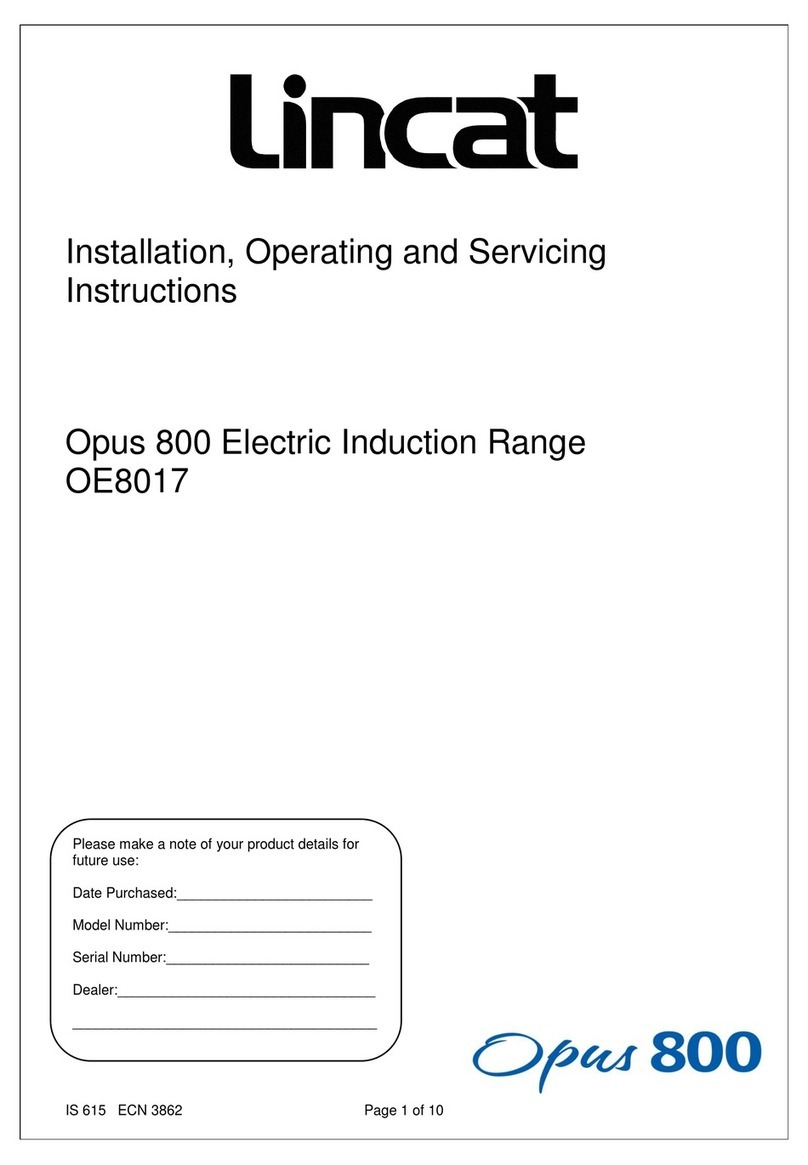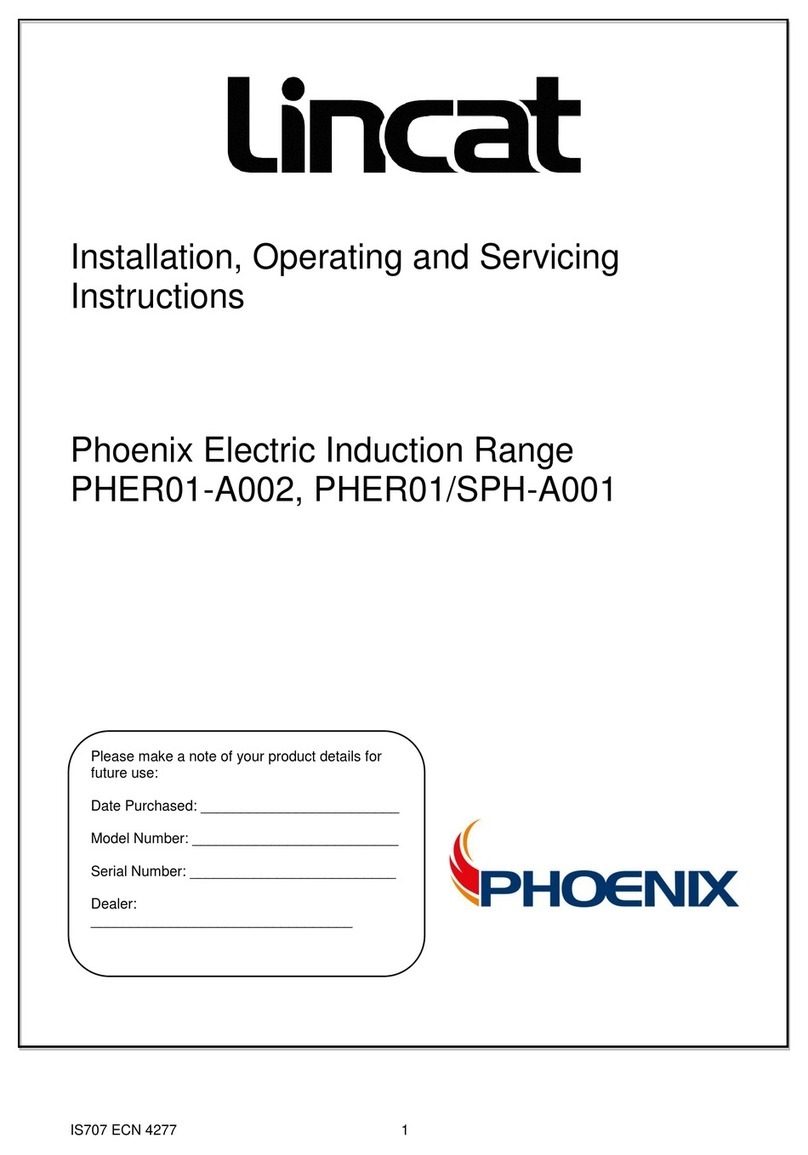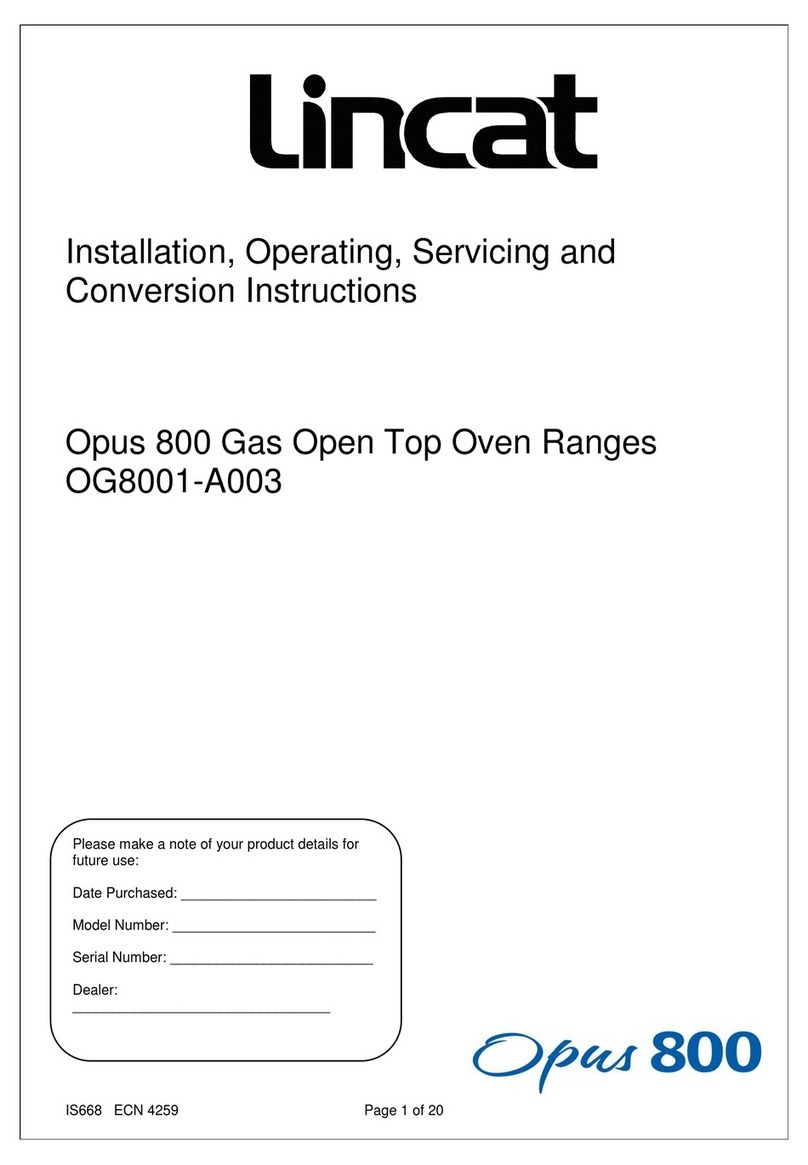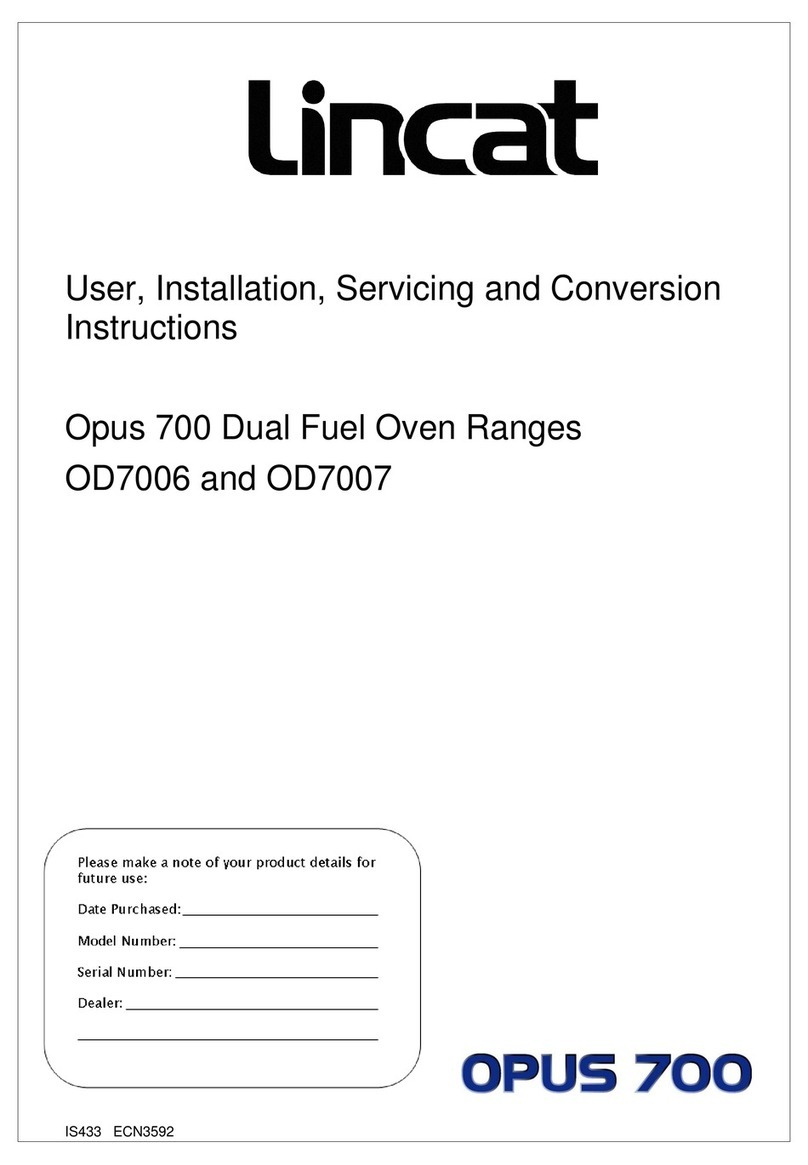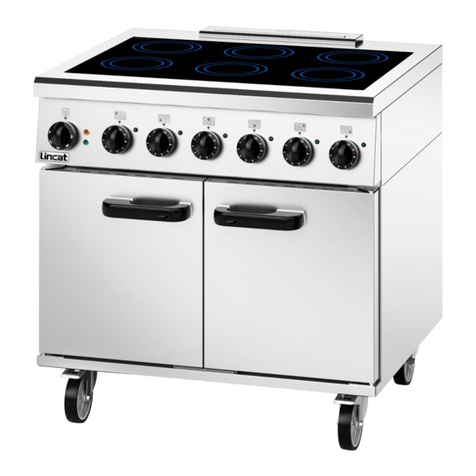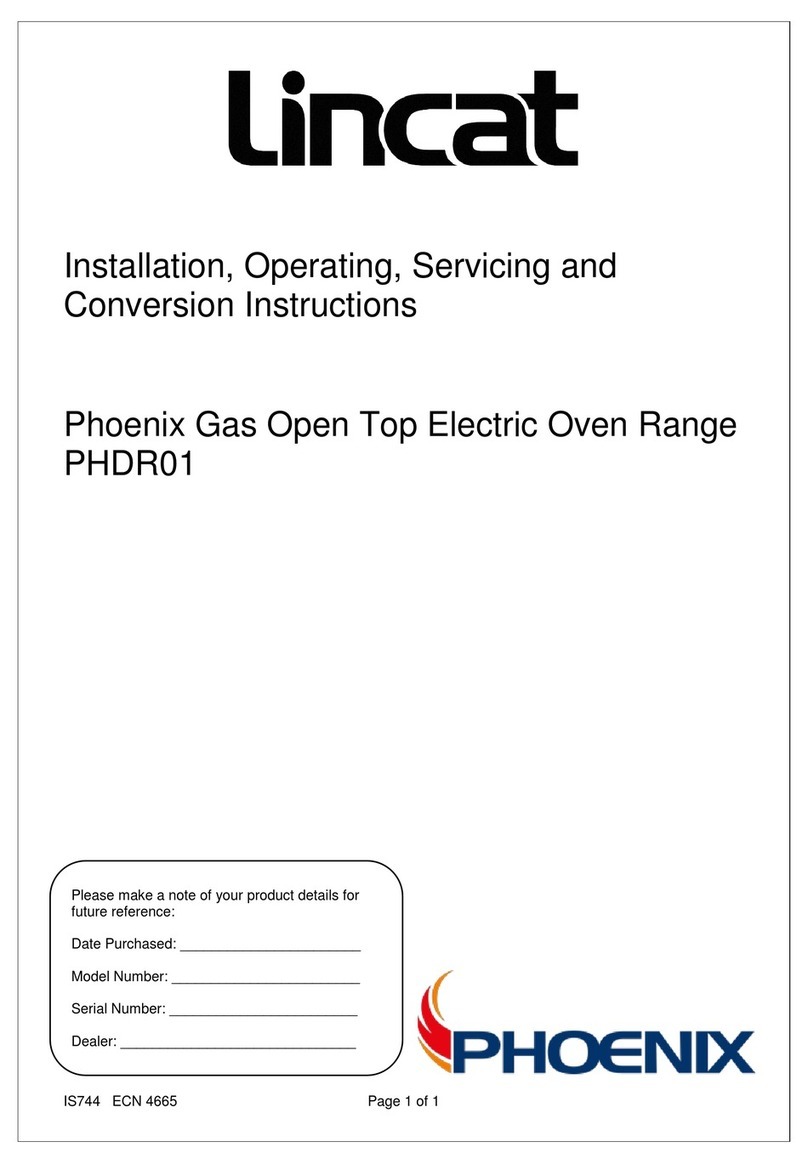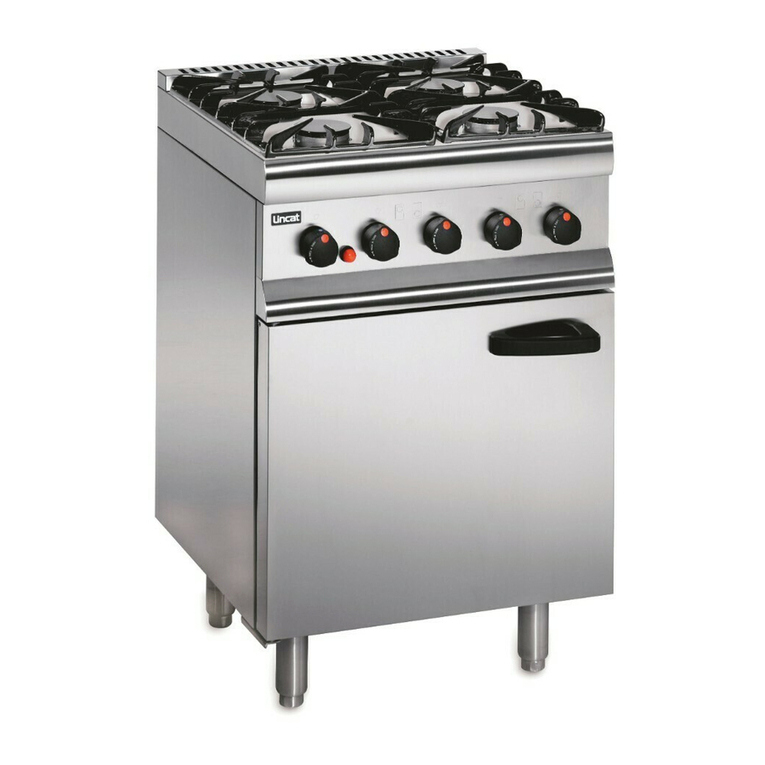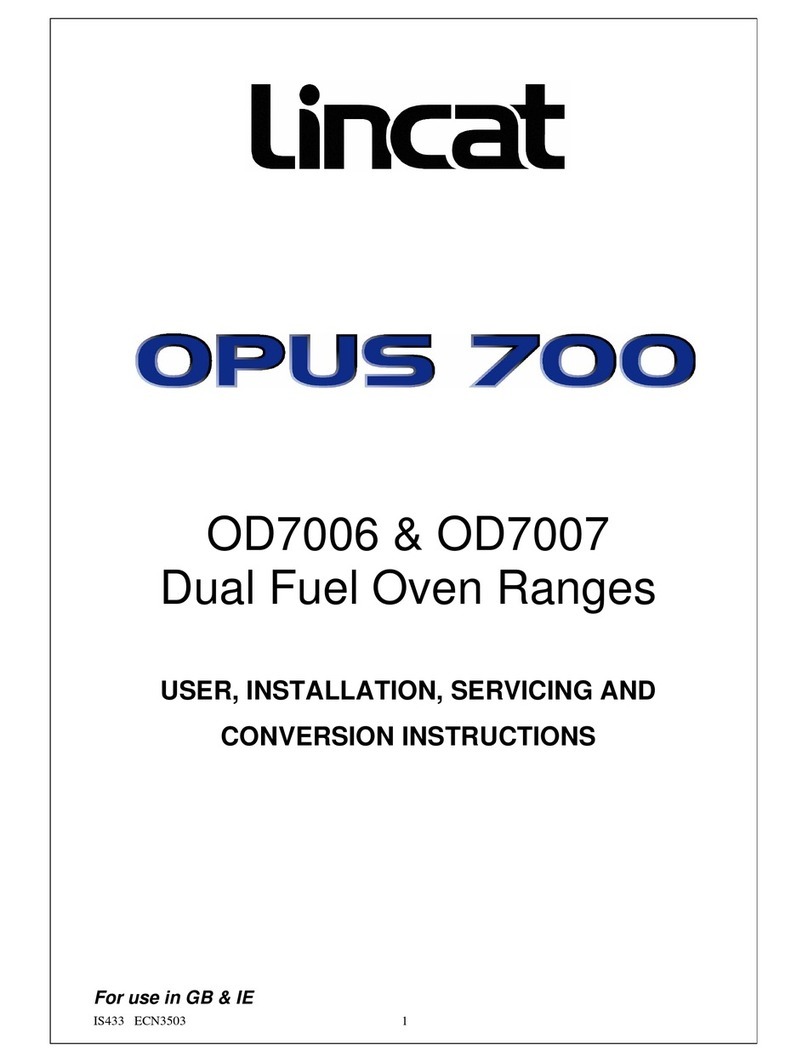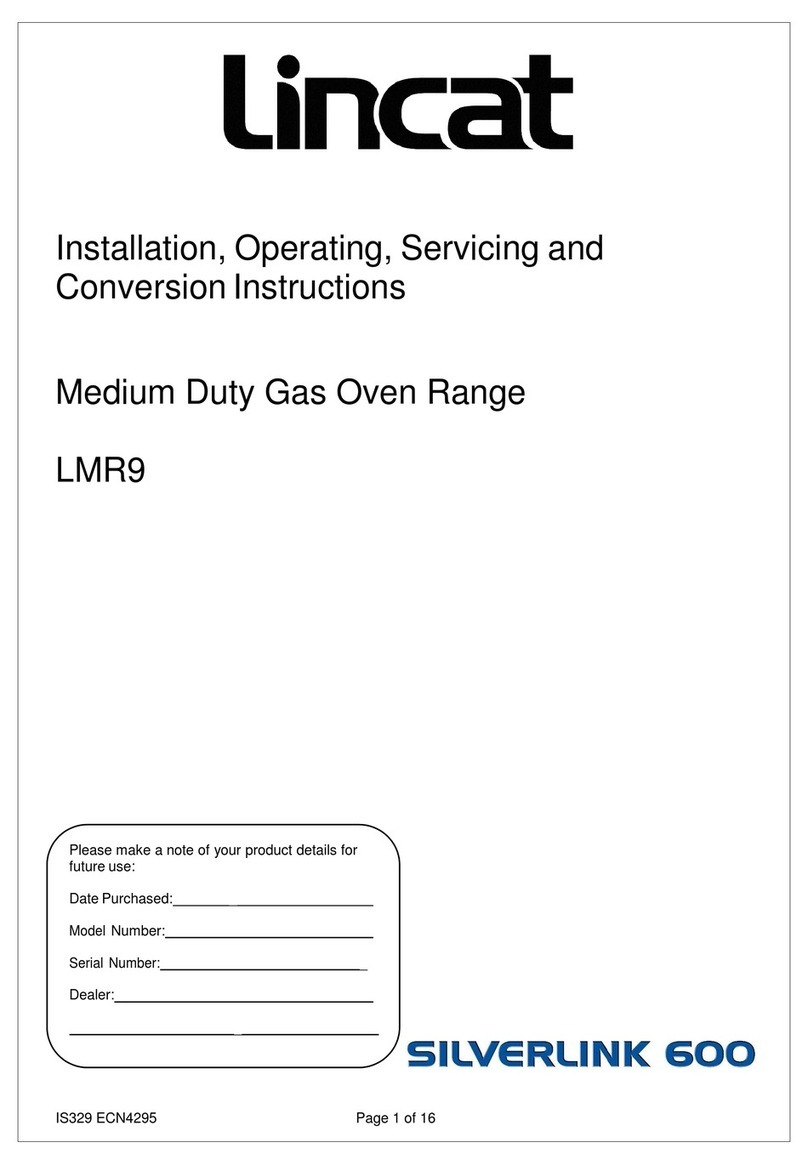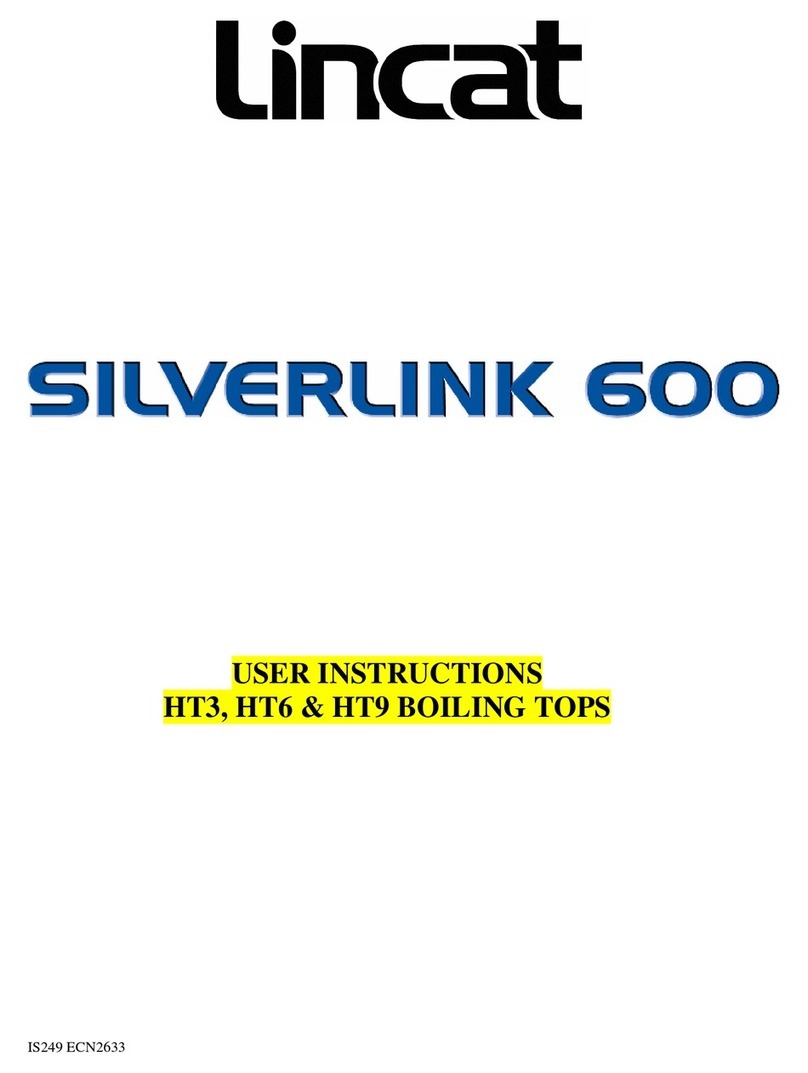
IS644 ECN 4259 Page 9 of 20
This appliance is only for professional use and should only be used by qualified
personnel.
Ensure that the person responsible understands how to light, safely operate, clean
and shut down the appliance and is made aware of the position and operation of the
gas isolating cock in the event of an emergency.
Ensure that all controls have free and easy movement, if not contact a qualified service
engineer.
This appliance is intended to be used for indirect cooking of food.
All users should know how to clean burner caps and to correctly locate the burner
cap on the burner body.
LIGHTING SEQUENCE –HOB BURNER
Open the main gas cock.
Remove the bull’s eye plate.
Push in the control knob then rotate anti-clockwise to any position to allow gas
through to the burner. Manually light this burner using a taper or piezo wand.
On establishing a flame at the burner, keep the knob depressed for approximately
15 seconds then release. The burner should remain lit.
Replace the bull’s eye plate.
LIGHTING SEQUENCE –OVEN BURNER
Open the main gas cock.
Open the right hand oven door.
Push in the control knob then rotate anti-clockwise to the spark position to allow
gas through to the burner. Depress the ignitor button on the control panel to light
the gas at the burner.
On establishing a flame, keep the knob depressed for approximately 15 seconds
then release. The burner should remain lit.
Rotate to desired temperature setting to ignite the gas at the main burner.
SHUT DOWN
To shut down the appliance rotate all control knobs clockwise to the OFF position. The
gas supply stopcock or bottle valve should now be closed.
Under no circumstances should the appliance be used with the bull’s eye
not fitted.
OPENING OF THE OVEN DOOR
Care must be taken to avoid injury when opening the oven door, when the oven is
in use as hot air will rapidly escape.
SOLID TOP PREPERATION
Clean the protective coating from the solid top surfaces with a mild detergent.
Light the hob burner to dry the surface then spread approximately 2kg of
household salt evenly over the surface.
Run the unit on full for around 20 minutes until the salt discolours.
Turn off the burner, allow to cool and discard the salt.
The solid top is now ready for use.
Note! The minimum temperature of the hottest point of the solid top (around the
edges of the bull’s eye) is approximately 390°C.
